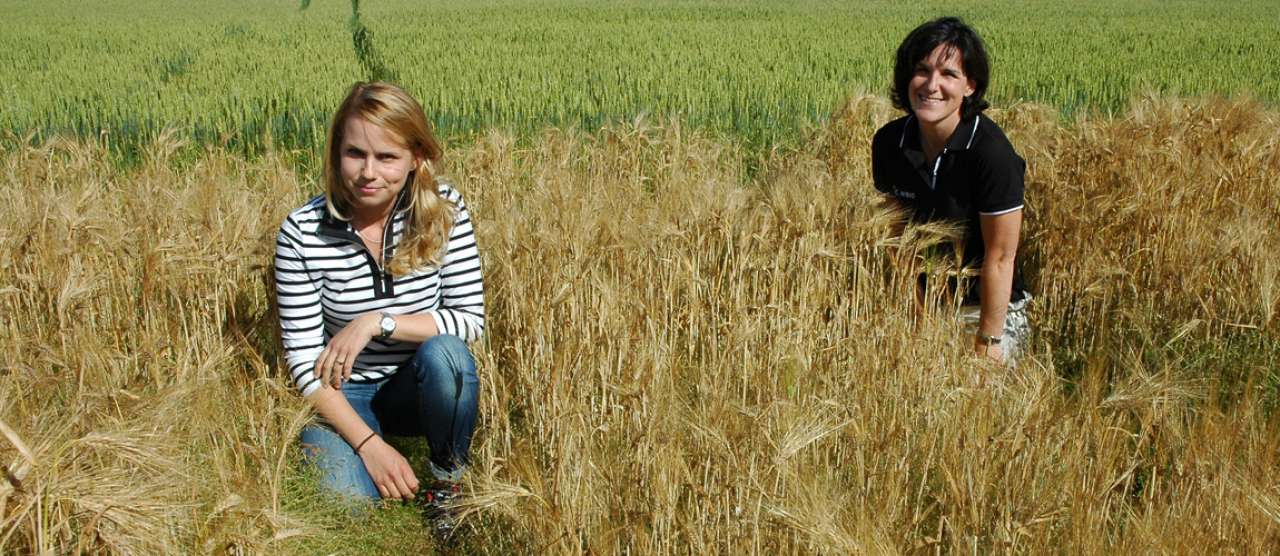How much water can grain tolerate?

Tove Sundgren og Wendy Waalen. Photo: Jon Schärer.
After a rainy summer the question arose again: How much water can grain tolerate? This is also a question for the future: How will grain tolerate climate change with more and sometimes heavy rain?
As part of the Agropro project (Agronomy for Increased Food Production), scientists survey which grains are most robust and can best withstand wet conditions in the soil.
35 millimetres of rainfall on average each day for a good two weeks is in excess of what a grain farmer likes. What can one do about it, practically? At NIBIO’s research station Apelsvoll at Toten, Senior Research Scientist Wendy Waalen applied about 35 mm of water daily in an experimental field site. She examined the effects of additional fertilization, increased sowing amount, and weed harrowing.
So far, tests at Apelsvoll have shown that additional fertilization has a positive effect. Measurements of chlorophyll in the leaves showed that increasing the amount of nitrogen fertilizer gave greener, better leaves. There were still smaller harvests in the water-saturated pilot plots compared to control plots that were not water-saturated.
Previous greenhouse experiments showed great differences in which varieties can tolerate most water. Oats showed highest tolerance; the harvest was reduced by 50% only after 15 days. Peas, however, were reduced by 50% already after three days. Barley and wheat generally tolerate slightly less water than oats.
It can be a comfort that Norwegian and Nordic varieties seem to manage better than non-Nordic varieties. This was shown by an intensive irrigation experiment carried out by the Norwegian University of Life Sciences as part of Agropro.
Contacts

Contacts

